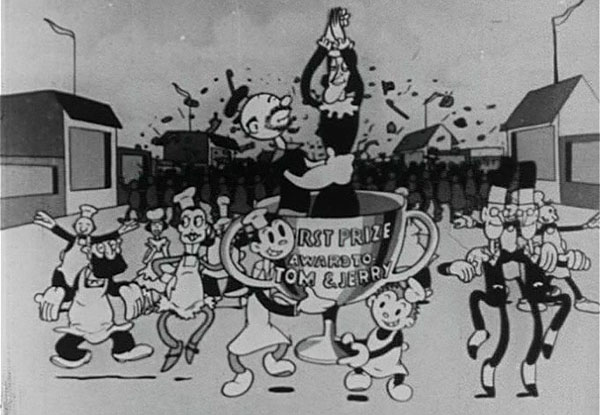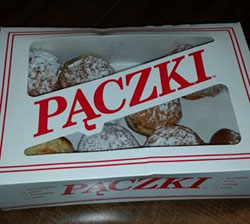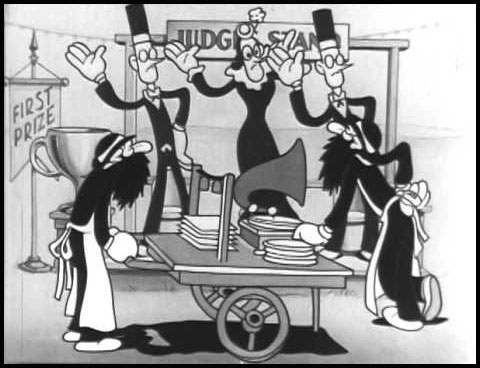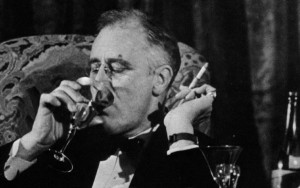
Here in the Detroit area, there’s a big Polish community, so Fat Tuesday is more often referred to as “Pączki Day” (pronounced “Poonch Key” and sometimes “Punch Key” here). Of course, this is true in many places. Growing up, I strongly associated one area of Detroit with Pączkis – Hamtramck, a city surrounded by Detroit on all sides. These days, the town still has some Polish population- but not the 90% it used to be in the early 70s. Back then I remember my Grandma going to Hamtramck specifically to get Pączkis from a certain bakery. These days, all around Detroit, many local bakeries have amazing Pączkis.
 Here’s a nice little article from the Detroit Free Press “What Detoriters should know before eating Packzki” including where to get them here locally
Here’s a nice little article from the Detroit Free Press “What Detoriters should know before eating Packzki” including where to get them here locally
Of course, if you’re unable to get an actual Pączki, a jelly doughnut will do. For many years now, I always think of the Van Beuren Tom & Jerry cartoon Doughnuts around Fat Tuesday.
It’s easily one of the racier Tom & Jerry cartoons. I think the Van Beuren Studio wasn’t necessarily trying for equal opportunity offensiveness, but they often succeed in a coarser. outrageous way than even the Fleischers. Doughnuts stands out for going little further than usual.. perhaps the enthusiasm for the subject matter made it easier to be a little looser in writing.
The cartoon is extreme right from the start; during the opening parade, there are horses with many more flies than you’d ever want around any food as well are both gay and Jewish caricatures. The prints of this short are usually edited, cutting out many of the sequences featuring both the Jewish Stereotypes as well as most of the shots featuring ‘Pansy Brand Cream Puffs’ with the usual gay stereotypes. A ‘Cheap Scotsman’ is seen a few minutes in trying to pass a wooden nickel. later, two of the male judges dance with each other, and have the usual limp wrists in the final shot.

Alcohol references are heavy too, from the ‘3.2 pretzels’ to the drunk sailor who throws a huge wrench in the works at the end of the cartoon. “Drink! Drink! Drink” is sung with gusto earn the beginning and end, making this short much more Beer than doughnuts.
 This cartoon was released in July, 1933. A little more than three months before its release, in late March 1933, newly-elected president Franklin D. Roosevelt, in one of his first acts as president, legalized beer with an alcoholic content of 3.2 percent, a clear signal that the end of prohibition was near. I wasn’t until late in the year that Prohibition ‘officially’ ended, but clearly this cartoon is celebrating the new freedom. The one-legged sailor who wanders into the festivities must not have gotten the memo though- he’s still coveting his large jug of bathtub moonshine.
This cartoon was released in July, 1933. A little more than three months before its release, in late March 1933, newly-elected president Franklin D. Roosevelt, in one of his first acts as president, legalized beer with an alcoholic content of 3.2 percent, a clear signal that the end of prohibition was near. I wasn’t until late in the year that Prohibition ‘officially’ ended, but clearly this cartoon is celebrating the new freedom. The one-legged sailor who wanders into the festivities must not have gotten the memo though- he’s still coveting his large jug of bathtub moonshine.
The essential Mark Kausler first showed me this film with many of it’s missing shots; he had meticulously pieced it together from several prints, and he has done with many rare films. His favorite gag (and mine too) involves a clever and somewhat outrageous gag featuring Matzo bread. What other 30s cartoons have Matzo bread in them? A rare, most likely complete print showed up years later with better overall quality, and that’s the copy that appears here. It’s featured on the ‘Complete Tom and Jerry’ Thunderbean DVD set.
Have a great week everyone, and don’t eat too many Pączkis!!


 Steve Stanchfield is an animator, educator and film archivist. He runs Thunderbean Animation, an animation studio in Ann Arbor, Michigan and has compiled over a dozen archival animation DVD collections devoted to such subjects at Private Snafu, The Little King and the infamous Cubby Bear. Steve is also a professor at the College for Creative Studies in Detroit.
Steve Stanchfield is an animator, educator and film archivist. He runs Thunderbean Animation, an animation studio in Ann Arbor, Michigan and has compiled over a dozen archival animation DVD collections devoted to such subjects at Private Snafu, The Little King and the infamous Cubby Bear. Steve is also a professor at the College for Creative Studies in Detroit.






















“Pączki Day” is a “thing” here in the Buffalo area, too. Thanks for keepin’ it real, Steve!
Fun to learn about the tradition of pączkis! Thanks, Steve!
We’ve had them in Toledo as well, which once had a thriving Polish community that mostly existed along several communities near the central part of town. Still, the favorite Fat Tuesday pastry is an annual favorite at many supermarkets…
https://www.pinterest.com/pin/30891947421672706/
http://www.toledoblade.com/local/2017/02/28/Polish-Village-holds-annual-paczki-sale.html
It’s worth noting that the article you cite from the Freep indicates that some paczki recipes call for a bit of grain alcohol in the recipe, in order to prevent the confection from getting too greasy.
No indication as to whether the booze is supplied by pseudo-Popeyes.
I love this…;)
Mmmm, you’ve made me hungry with this segment! The order of points of outrageousness in cartoons, to my mind, goes like this–the Max Fleischer Studios, the Van Buren Studios, the early Warner Brothers cartoons, up through the latter 1930’s, the Walter Lantz Studio, although it is possible that Lantz garners more points than Warner Brothers; I’ll leave that to those of you writing for this weblog and those who might comment on what I’ve said here. The early 1930’s is what sets Harman and Ising apart from Disney. Hugh and Rudy often upped the percentage of “barnyard” humor that a studio like Walt Disney’s didn’t ever want to touch, although I cannot speak for the silent Disney cartoons, but thanks to the Thunderbean TOM AND JERRY set, I was surprised how much Van Buren cartoons got away with that kind of humor.
When I later saw the comics of R. Crumb, I was reminded of so many 1930’s black and white cartoons. If some animators of the ’30’s could havce gotten away with marijuana gags, perhaps it is possible that you might have gotten a reference or two. The “jazz needle” gag in “SWING WEDDING” (MGM) certainly puts that cartoon in this category, especially since I don’t recall ever actually seeing this cartoon on local TV, and it was a gag that I would have expected from the Fleischers, something like the “speed dust” that sprinkles on everything throughout a cartoon like “More Pep”. I’m sorry, I’m just rambling, here, but that all is part of the reason why I enjoy 1930’s cartoons, aside from the musical scores. Thanks for posting this, and that TOM AND JERRY set that you speak of is definitely in my collection.
Hi, Steve-
Thanks for another great article.
Any plans on releasing the Complete Tom and Jerry on Blu Ray?
Decidedly pre-Hays Office! 😀
Thanks for the interesting references to gays and Jews once again this was a first for me